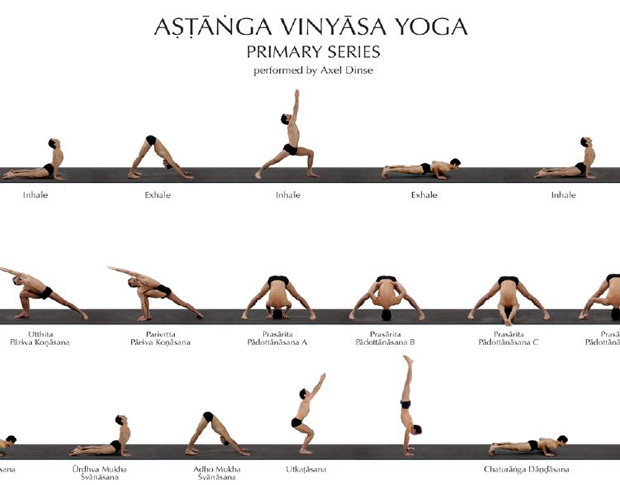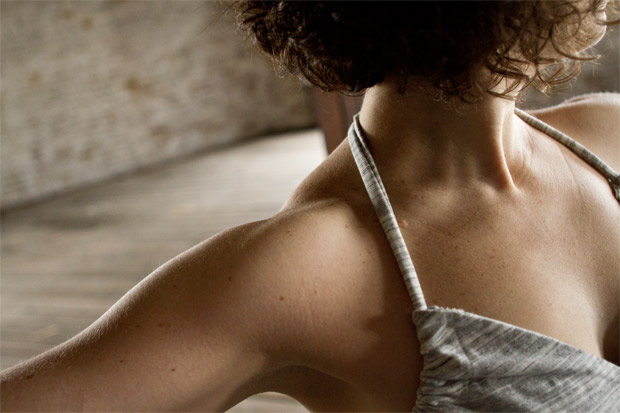My first teacher, Missy Gifford of Lemon Tree Yoga in Glens Falls, NY, used to tell us, “Yoga isn’t about getting a yoga butt…but… that will happen in time.”
Unless you’re taking classes at a gym or fitness studio, it’s not often you’ll hear teachers talking directly about the physical transformation that happens when you commit to a yoga practice. Sure, they’ll mention the expanding of breath capacity, discuss the particular muscles that are being worked in a pose, and probably even talk about “growing stronger with practice,” but as the spiritual aspects of the practice gain wider acceptance, yoga as a very real form of exercise can be taboo talk in certain crowds.

Case in point: recently I took a very mellow, traditional hatha class that included chanting, a gentle, mostly seated asana practice, and a lengthy, restful savasana. Afterward, one of the women, while thanking the teacher, said quite frankly that her class was “real yoga” and continued to complain about very-physical classes, deeming them “unspiritual” with a very What is the world coming to? kind of tone.
I bit my tongue.
Yoga as a workout is a very personal topic for me, and I continue to encourage anyone and everyone to try yoga — purely for its physical benefits. In my opinion, the spirituality of practice is innate, and blossoms as you open up and let it in. For some practitioners, that comes naturally. For others, they might enjoy a physical workout for years without ever diving deeper. But ask any lifelong yogi and they will all tell you the same thing: the practice eventually changes you outside and in.
…ask any lifelong yogi and they will all tell you the same thing: the practice eventually changes you outside and in.
When I first began practicing, I was looking for stress relief and exercise. Period. I wasn’t really interested in stories about Hindu deities, chanting, or meditation. Even the ujaayi breath, a constriction of the back of the throat that creates a raspy, Darth-Vader-esque sound, seemed a little out-there to me. I pretty much never joined in with an OM.
I was (and still am) a very Type A personality, and it takes some serious effort to quiet my always-racing mind. I dabbled in yoga here and there, but never really experienced a deep release or “yoga high” until I took Missy’s Power Yoga class. A vinyasa flow style heavily based on the Ashtanga primary series, Power Yoga had me working hard and sweating as my heart rate increased. Essentially, it was a cardiovascular workout, complete with warm-up, strength training, stretching, cool down, and relaxation. For the first time in my life, I not only felt a pool of calm in my heart and quiet in my mind, but I also had found a form of exercise that I actually enjoyed.

I fell in love with Power Yoga, specifically with how it made me feel. Gradually, over a few years, I gave in to the craving for that feeling, and began practicing more and more, growing from once every couple weeks to twice a week—and now, daily. Just as gradually, I watched my body change. I remember the first time I noticed in the mirror that I had muscle definition in my neck, shoulders, and collar bones. I literally stared at myself like, “Whoa! This yoga is really working!”
Over the years, I lost weight, saw my strength and flexibility increase dramatically, found myself in yoga poses I thought were impossible, and witnessed a much-needed boost in my self-confidence and belief in my own capabilities. All of this opened up doorways inside me, and eventually I began to see my practice as a ritual of self-compassion that accessed my innermost self and ignited a spiritual curiosity.

So, you can imagine my frustration when I hear others chiding that a yoga class that’s also a very physical workout is somehow “less than” and not “pure” yoga. Students that come to the practice to get fit will indeed find what they’re looking for. But even classes devoid of any spiritual influence are still yoga, in my opinion. The postures seep in and work their magic, regardless of delivery or context. So that eventually, in the stillness of savasana, the yogi who once only wished for a “yoga butt”, realizes she’s grown a spacious, radiant yoga heart, too.

I love you, your writing & your beautiful yogi heart & spirit! Period.
Awww Dre! I love you too sweetie! Happy weekend to you two!
Oh Raeanne!! I love this post. I heard a similar debate about art yesterday that got me wrinkling up my nose like I was smelling yucky trash. It is amazing the labels we identify with and then later use to judge the very thing we came to love and respect. I think that lady you speak of needs to remember that yoga is a tool, something that enters our life for a reason, something that will teach us a specific lesson and give us a personal transformation experience… and those reasons and lessons vary from person to person, and must be communicated in a variety of ways to sink in…. To expect yoga to be done one way, and to have the same effect on all peoples, in my opinion is not the mindset of an effective teacher. Which is to say, this is why you are such an effective teacher and yoga practitioner. :-) I loved this post. And can I please hire you to teach me a rigorous personal yoga class…. say end of September?? ;-)
You’re absolutely right, Jen. I think my experience (and yours with the Art conversation) tend to happen as times change and people naturally grow attached to the way things were. For yoga, art, and I’m sure many other traditions that have been passed on for centuries, there is always a struggle between those that want to maintain the “tradition” and those that want to push things forward. It definitely takes an open mind and respect for historical roots to walk that fine line between honoring and progressing. Thanks for pointing that out! :)
And yes, absolutely on the personal yoga class!! Let’s talk soon!